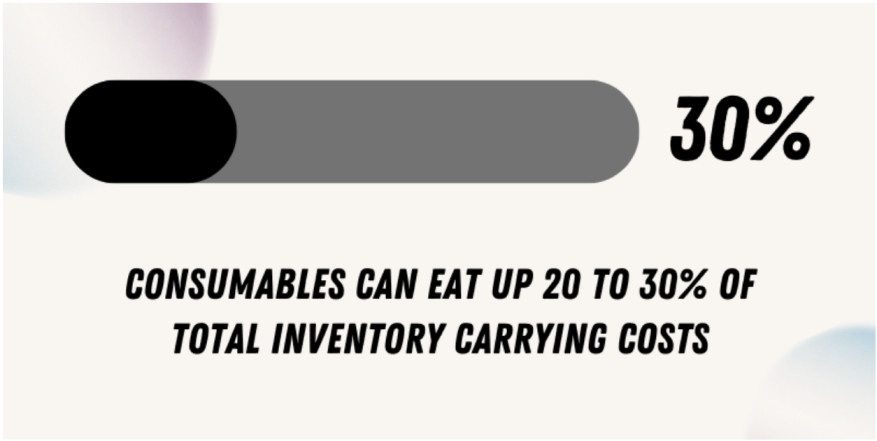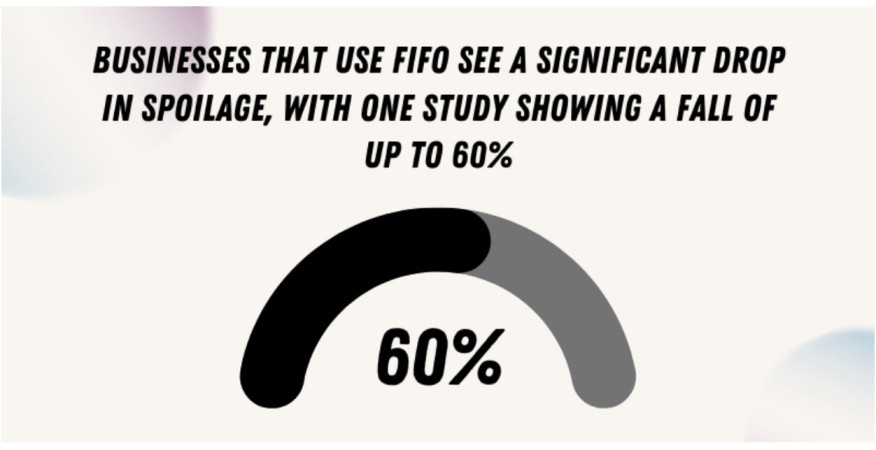Consumable Inventory Management Strategies for Smooth Operations
Looking for consumable inventory management strategies? Here are the ones you can use to track usage, cut waste, and keep operations running smoothly.
In this article:
- Key Takeaways: Consumable Inventory Management
- What are Consumables?
- Consumable Inventory Management Explained
- Four Strategies for Effective Consumable Inventory Management
- 1. Set Minimum Stock Levels (Reorder Point)
- 2. Use the ABC Method
- 3. Implement a FIFO System
- 4. Standardize Procurement
- Take Control of Your Consumables Today

Ever notice how it’s always the small things that cause the biggest headaches? The toner runs out five minutes before a big presentation, or the tape that you need for shipping is nowhere to be found.
These aren’t massive breakdowns, but they slow you down and cost money over time. The best way to keep these items in check is through consumable inventory management. It helps keep your business flowing without interruption.
Want to know more about how it works and which are the best strategies to use? Keep reading.
Key Takeaways: Consumable Inventory Management
- Consumables Matter: Everyday items like gloves, paper, and cleaning products can quietly eat up your inventory costs. Managing them well directly saves money and avoids unnecessary waste.
- Reorder Points Prevent Stockouts: Using a simple formula based on usage, delivery time, and safety stock helps you avoid running out of essentials at the worst time. This is the foundation of smooth operations.
- The ABC Method Helps Focus: Not all items require the same level of attention. High-value consumables (A-items) need close tracking, while cheaper items (C-items) require minimal effort.
- FIFO Reduces Waste: Always use older stock before newer deliveries. Simple labeling and storage practices cut spoilage, especially for items with expiration dates.
What are Consumables?

Source: Investopedia
Consumables are the everyday items your business uses up, things like office supplies, cleaning products, packaging materials, personal protective equipment (PPE), and more.
Although consumables don’t directly generate revenue, they still contribute to operating expenses. For many small and mid-sized businesses, consumables can eat up 20 to 30% of total inventory carrying costs.
Consumable Inventory Management Explained
In simple terms, consumable inventory management is the process of tracking, controlling, and replenishing the items your business uses on a regular basis.
Think of it as making sure you never run out of the small things that keep daily operations running smoothly. These include items such as packaging tape, printer ink, gloves, cleaning chemicals, and PPE.
Without a proper system, consumables can quickly turn into a headache. You might overstock items you rarely use while constantly running out of the essentials. This results in wasted money, time, and frustrated employees who cannot perform their jobs effectively.
Four Strategies for Effective Consumable Inventory Management
If you want your consumable inventory management to work at full capacity, here are the strategies you need to use:
1. Set Minimum Stock Levels (Reorder Point)
Inventory shrinkage and running out of essentials at the wrong time can paralyze your operations. For instance, running out of printer paper right before a client deadline or going out of gloves mid-shift in a medical facility.
This is where the minimum stock levels (also known as reorder points) come into play.
The formula is simple:
Reorder Point = (Average Daily Usage × Lead Time) + Safety Stock
- Look at your past usage records, even if it’s just a month of receipts, and note how many of an item you typically use in a day.
- Write down how long it usually takes for your supplier to deliver once you place an order (lead time).
- Always maintain some “safety stock” in case of delays or unexpected spikes.
Example: If you use 50 gloves daily, your supplier takes 5 days to deliver, and you keep 100 as a backup, then you need to reorder when the stock reaches 350 gloves. This way, you’ll never hit zero and won’t waste money stocking extras.
2. Use the ABC Method
Not all consumables are equal. Some drain your budget fast, while others barely make a dent. The ABC method helps you focus your energy where it matters most. This method usually goes like this:
- A-items: High-value or high-use items. They make up only about 20% of your stock but account for around 80% of your purchases. These need close monitoring.
- B-items: Moderate value and frequency. Check them regularly, but don’t over-manage.
- C-items: Cheap, everyday items like pens or paper towels. They’re easy to replace and need less attention.
Now, based on this, create a simple list of all consumables, sorting them by cost and usage. You can also use an office inventory management software to make tracking easier. This method saves you from spreading your attention too thin.
3. Implement a FIFO System
What would happen if you always grabbed the new things first, while the old ones got forgotten? They spoil much quickly. That’s exactly what happens in inventory when you don’t use a First-In, First-Out (FIFO) system.
You just need to ensure that the oldest stock is used before the new ones. Simple, but powerful. In fact, businesses that use FIFO see a significant drop in spoilage, with one study showing a fall of up to 60%.

Source: APS Fulfillment
Here’s how you can apply it:
- Label every box or pack with the date it arrived.
- Store new items behind the old ones so staff naturally grab the older stock first.
- Train your team: “Use the oldest first” should be the rule of thumb.
This is especially useful if you handle items with expiration dates, like cleaning products, medical supplies, or food packaging. Businesses that follow FIFO see less waste and experience more predictable inventory levels.
4. Standardize Procurement
If different team members order supplies whenever they notice a shortage, you’ll quickly end up with chaos: duplicate orders, mixed vendors, or worse, gaps where nobody ordered anything at all.
Standardizing procurement means creating one clear process. Businesses that maintain consistent vendor relationships often receive better pricing, faster service, and fewer errors. Plus, you avoid surprises like three shipments of the same toner arriving at once.
You need to decide:
- Who places the orders?
- Which vendors do you use for each type of item?
- What are the approval steps?
McKinsey research reports that procurement accounts for 50% to 80% of a company’s total cost base. By aligning orders and establishing approval processes, you can simplify ordering and minimize recurring mistakes.

Source: McKinsey
Take Control of Your Consumables Today
Consumable inventory management may seem insignificant compared to larger business systems, but it can make or break your daily operations. By using simple strategies, you can create a structure that saves money and avoids last-minute stress.
One mistake you need to avoid is treating consumables as an afterthought. When managed properly, they provide your team with what they need to work smoothly and prevent hidden costs from accumulating.
Your next move? Apply these inventory management strategies today!
Frequently Asked Questions
-
Bulk buying can lower unit costs, but it’s risky if items expire or get damaged. Only bulk-purchase high-use consumables you know will move quickly. For slower items, smaller, more frequent orders prevent waste. The balance depends on usage data, not assumptions, so always check consumption trends.
-
Start with spreadsheets. Track item name, daily usage, stock on hand, reorder point, and supplier. Set calendar reminders for checks. It’s simple, free, and effective. Once your business grows, you can upgrade to inventory management software for automation, but spreadsheets give you solid control in the beginning.
-
The biggest challenge is preventing shortages without overstocking. Many businesses either run out of critical items or tie up cash in excess stock. The solution is setting minimum stock levels, monitoring usage patterns, and using tools that provide real-time visibility into your consumables.
